Samsung Galaxy Note 3 Review
by Brian Klug on October 1, 2013 9:00 AM EST- Posted in
- Smartphones
- Samsung
- Mobile
- Android 4.3
- galaxy note 3
Display
One of my only issues with the Note 2 after using it for a long time was resolution. Although the move to a subpixel matrix with a full 3 subpixels per pixel on the Note 2 honestly really put most of my concerns at bay at launch, 720p started to feel limiting further on in that product’s cycle. Having more display area is great, however in Android what really matters is resolution. It was ironic having this phone with a huge display, but 720p resolution that was quickly eclipsed by devices with so much smaller displays. With the Note 3 Samsung moves to 1080p at 5.7 inches, up from the 720p at 5.5 inches in the Note 2, and 1280x800 at 5.3 inches from the original Note.
A question that immediately comes up every time we get a Samsung phone with AMOLED is first, what kind, and second what subpixel unit cell is behind it all, be it an RGB stripe or some other RG,BG alternative unit cell. In the case of the Note 3 we unsurprisingly see Samsung use the same unit cell as they did on SGS4, an offset pattern with green on one line and red and blue on another line. There’s a square blue subpixel with more area than the circular red and green subpixels as well to compensate for the difference in luminous efficiency of the material used in each subpixel type. As I’ve said in the past this isn’t PenTile (although people have started using that brand as a proxy for RG,BG alternatives) but something else entirely, but the ultimate end is still the same, two subpixels per unit pixel and not an RGB stripe.
The question for most normals then becomes – is this a big deal or can a normal human being see it? I’d argue that the subpixels on the Note 3, like the SGS4, are now small enough that they can’t be seen. I used to very picky about this, but I don’t find the new offset RG,BG pattern distracting at all on the Note 3. Subpixel size moves from just above 1 arcminute (1.006 and 1.073 for the Note and Note 2 respectively) down to 0.741 for the Note 3, making them small enough to in theory exceed human eye resolution of 1 arcminute. I won’t break out the huge table or chart, or go over all of that again, but it’s nice to see that finally be the case with the Note 3.
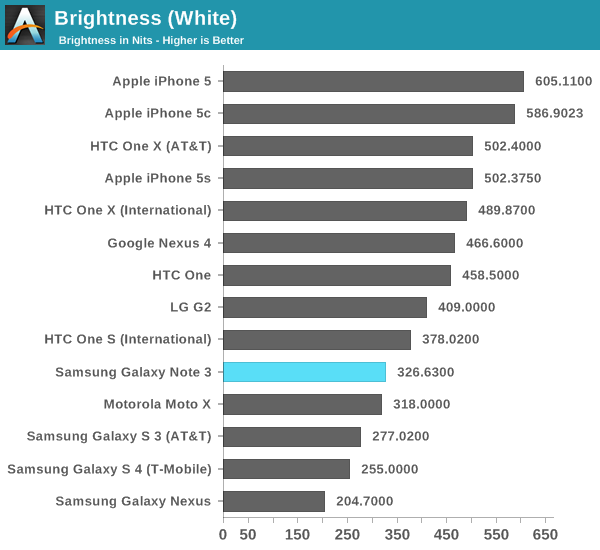
The Note 3 has the same display mode settings as we’ve seen in other generations, these mDNIe toggles allow some control over display color curves. They’re ultimately not a mitigation for Android’s lack of a real CMS and don’t completely solve the oversaturation issue that comes hand in hand with AMOLED’s different spectral curves, but they do help somewhat. These are unchanged as well from the SGS4 – Adapt Display is checked by default and will select which mode to use automatically for first party apps and a few others, but you can select between dynamic, standard, professional photo, and movie manually, which have different tunings for white point, gamut, and saturation. There’s also still the toggle for automatically adjusting screen tone depending on what’s being displayed.
Of the modes and configuration options available, I don’t doubt for a second that the most used one will be the defaults, however if you’re looking for the most sane from a color accuracy perspective it’s still Movie mode with the auto screen tone toggle unchecked. I gave Samsung the benefit of the doubt and ran all my measures in Movie mode as a result, but also took saturation measures of the other modes so you can see the difference in gamut and saturation with what you get under those.

The Standard and Dynamic modes have a ton of oversaturation, extending far beyond sRGB. In Dynamic mode we can also see some compression going on at the higher saturation levels, effectively blowing out those colors even more, with the second to last point almost on top of the last point. Pro Photo mode clamps down gamut and makes saturation a bit more linear, but has some odd other artifacts that show up. With the Movie selection made, the Note 3 display is considerably more controlled and linear, and makes a dramatic difference in how everything appears on the Note 3 during normal use. If you care about display really this is the only setting you should be using.
White point in movie mode is still bluer than I’d like at an average of just over 7100K, but in the all important Gretag Macbeth patch test, Delta-E is pretty low and puts it among iPhone 5, HTC One, and G2 territory. The results under movie mode from the Note 3 are actually nicely controlled. It still isn’t perfect, but there’s at least been an attempt made to give users that option if they don’t want garish colors that might look great on a store display but not so great if you care about matching photos you’ve taken to a display or print later, or web content between desktop and mobile.
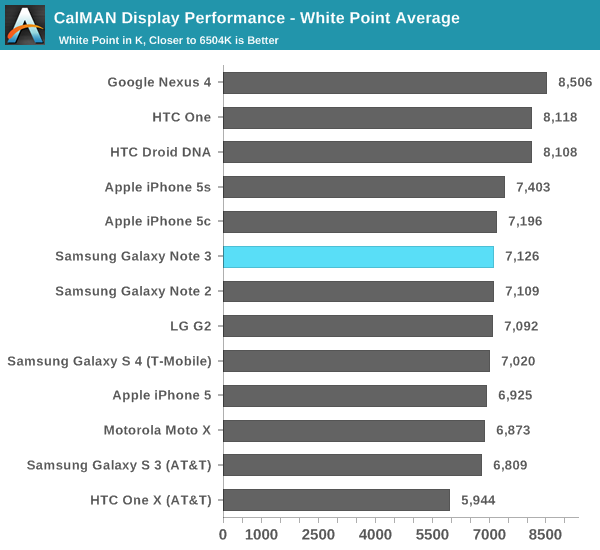
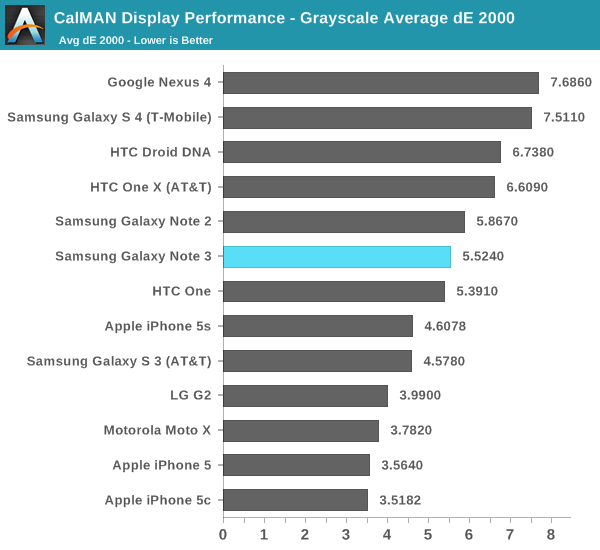
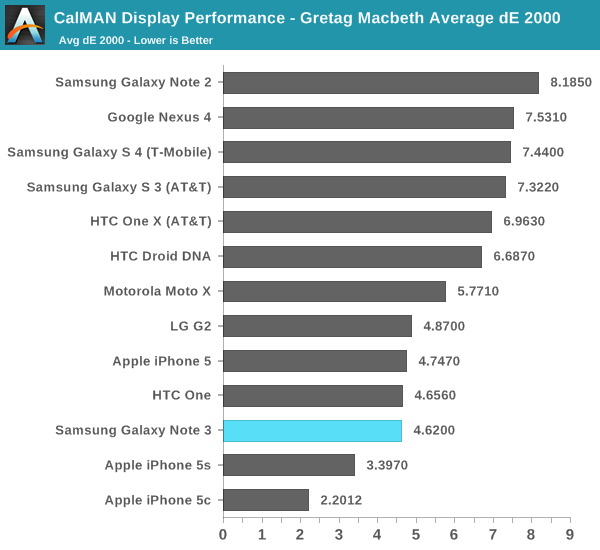
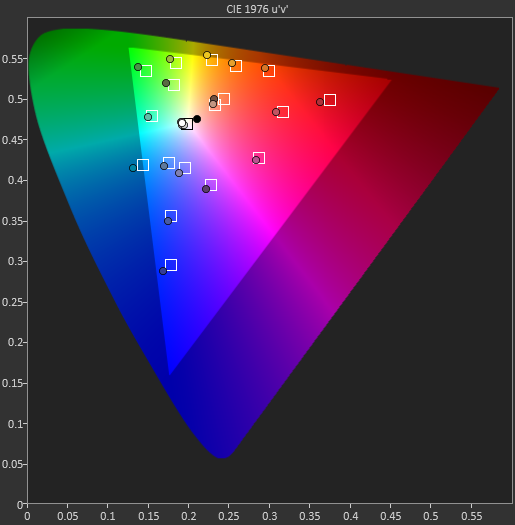
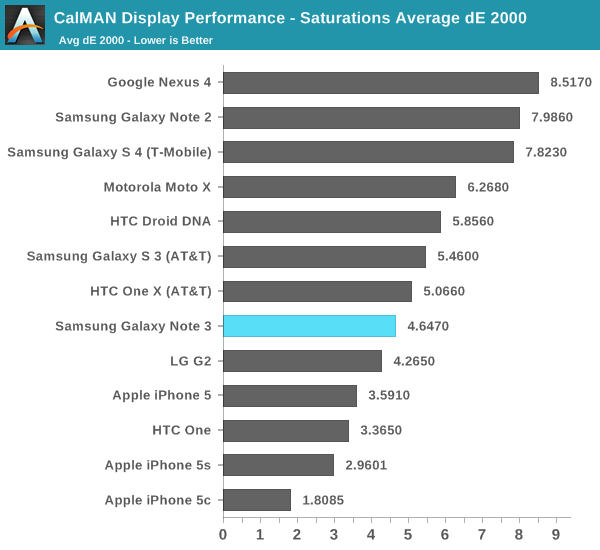



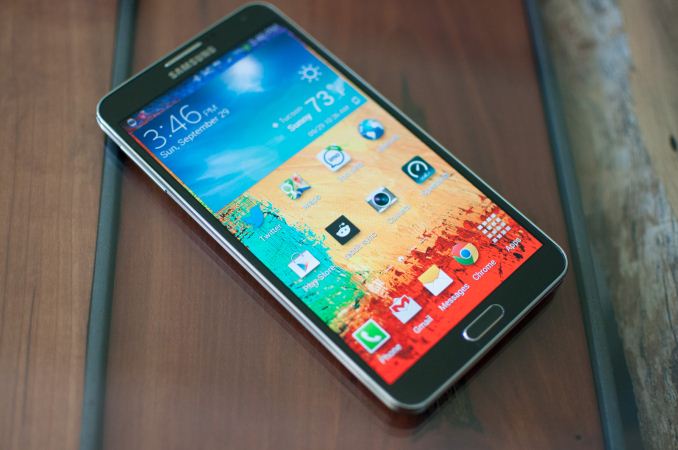
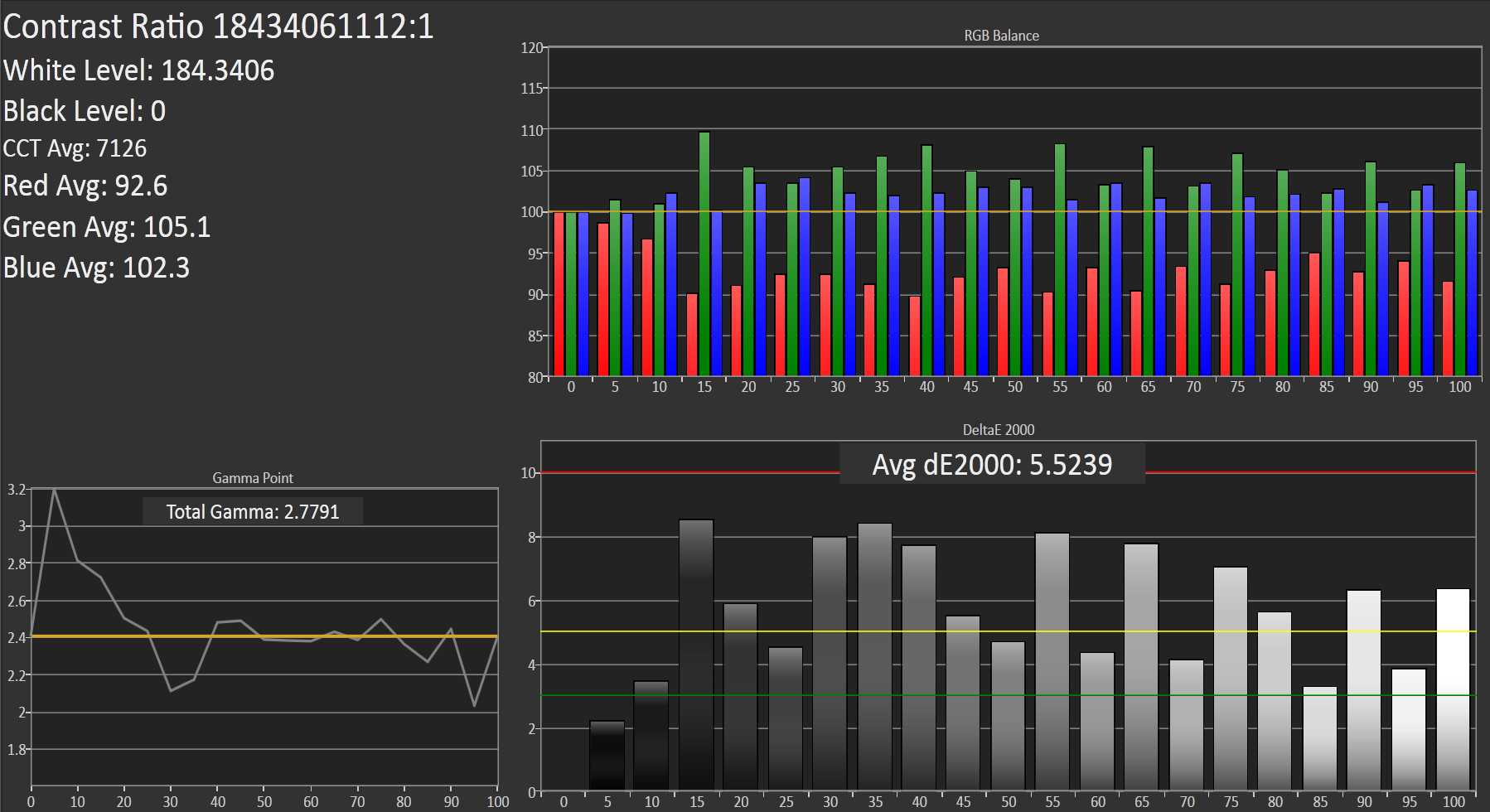








302 Comments
View All Comments
barry spock - Tuesday, October 1, 2013 - link
I don't usually bother to comment here but I agree with the above comment. It doesn't matter if it's samsung or android that's playing funny buggers. The fact that the benchmarks are being tampered with it should be clearly stated in every review involved.Spunjji - Tuesday, October 8, 2013 - link
It was. Several times. Your comment is *utterly* pointless.bigpics - Wednesday, October 2, 2013 - link
Actually thanks to Anand Lal Shimpi and Brian Klug on this site we do know that it's almost everyone in Android world who matters at least (the article mentions LG, Asus and HTC): http://appleinsider.com/articles/13/10/02/asus-htc...As for others, the AppleInsider article quotes Andandtech as saying, "With the exception of Apple and Motorola literally every single OEM we’ve worked with ships (or has shipped) at least one device" that similarly fudges benchmarks."
That being said, I think it should be CLEARLY pointed out in every review of every such device if unfudgeable benchmarks can't be easily created (or until they are).
ESC2000 - Sunday, October 6, 2013 - link
In addition to running the benchmarks, Brian also commented extensively on his real world experience using the phone. So instead of getting your panties in a twist about unscrupulous approaches to benchmarks, why don't you focus on the real world performance that is much more informative and not affected by the benchmark issues? I'm betting that most of the panty-twisted people don't even use Samsung products but just feel the need to take them down a notch.Geronemo3 - Thursday, October 24, 2013 - link
He called it cheating more than a few times. Yes manufactures should stop this stupidity. Plus the benchmarks are for reference and we can maybe minus 10% performance from it. I don't remember the last time I purchased a smartphone just on benchmarks alone.Aenean144 - Tuesday, October 1, 2013 - link
Anand,As soon as you published the benchmark charts with the Note 3 sitting at the top, as the highest performant Android device, you've willingly assisted in Samsung's aims with their benchmark boosting processes. This is their goal. Even though you mention it in words, it's the charts that are important as the charts are linked and displayed far and wide across the Internet. The words will be quickly forgotten or are just unread as is typical in the attention deficit addled Internet.
It's unfair to the LG G2, the Sony Z1, likely to the Nexus 5, and to any other Snapdragon S800 device out there that don't employ the same tactics. There's no magic to Samsung's use of the S800 here. It should perform about the same as any other S800 device.
But by publishing the charts as you did in this review, you are being nothing but a sop to Samsung. Call it what it is. Cheating. Don't publish the benchmark comparison charts if you *know* that Samsung is cheating. Don't publish the charts if you know that others are cheating. Your customers are your readers, not Samsung, not LG, not Qualcomm, not Apple or whoever.
uvaman20 - Tuesday, October 1, 2013 - link
Aenean144 and others,I don't care about Samsung and their cheating and if Anandtech didnt bring the story YOU and prolly 98% of the people on the Earth wouldn't know about this so stop blaming them. Blame Engadet, Phonearena, GSMarena and others for that...They presented the idea and they published that (even they knew that Samsung will be pissed). We know they are "cheating" now and LIVE WITH THAT. Its the same shit with with car manufactures and consumption? Ask them why they cheating and go that long that you dont want to buy cheating car and I can bet you did... Look at browser games, they are all cheating and? Government is cheating us on a daily base and what we did? We know to Whine only...
Aenean144 - Tuesday, October 1, 2013 - link
Nobody here is blaming Anandtech. We're trying to push them to up their game, be consumer advocates, and not try to be a mouthpiece for these companies. Report the truth.Btw, it wasn't Anandtech that revealed the SGS4 benchmark boosting business. It was some dude working on SGS4 overclocking and who reported it on Beyond3D forums. Anandtech let it sit for month. It was Anandtech who made it part of the news cycle demonstrating the power of their platform. Now for the Note 3, it's Ars Technica who've really done the best benchmarking; while it seems that Anandtech is playing footsie with Samsung.
At times, Anandtech is entirely too politic about it. Call it what it is. If they want it to stop, call it what it is. Playing nicely or doing stuff behind the scenes isn't doing consumers any favors. If they see there are problems, run application benchmarks, look a video transcode.
dugbug - Tuesday, October 1, 2013 - link
Anand, why don't you just do what ARS did and attempt to create renamed benchmarks that sidestep their silly string matching game.vFunct - Tuesday, October 1, 2013 - link
Are you implying that Apple uses benchmark cheats like Samsung does?